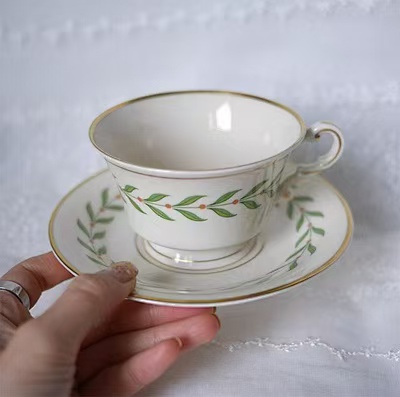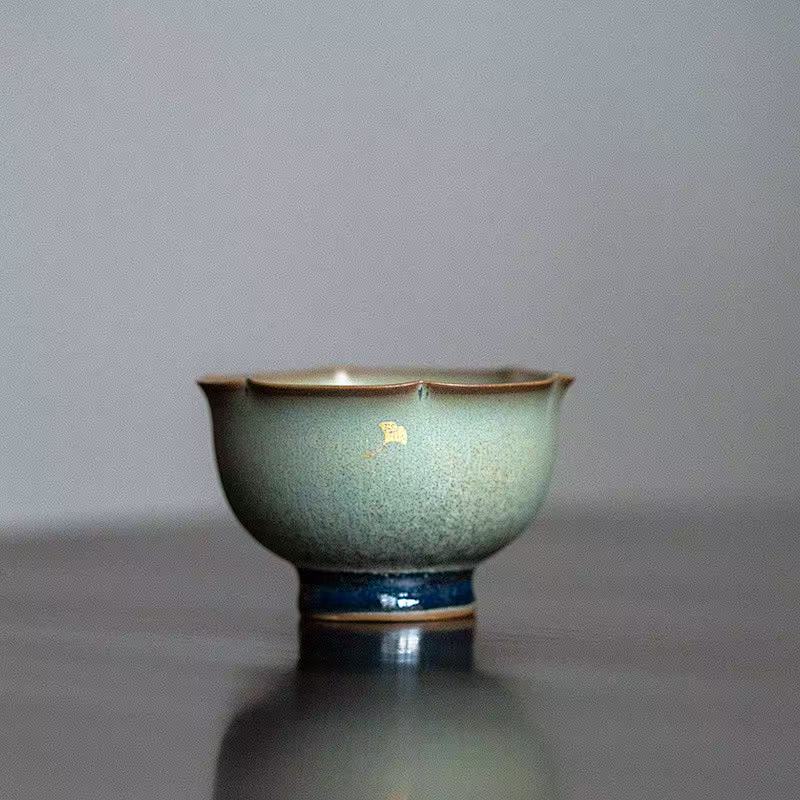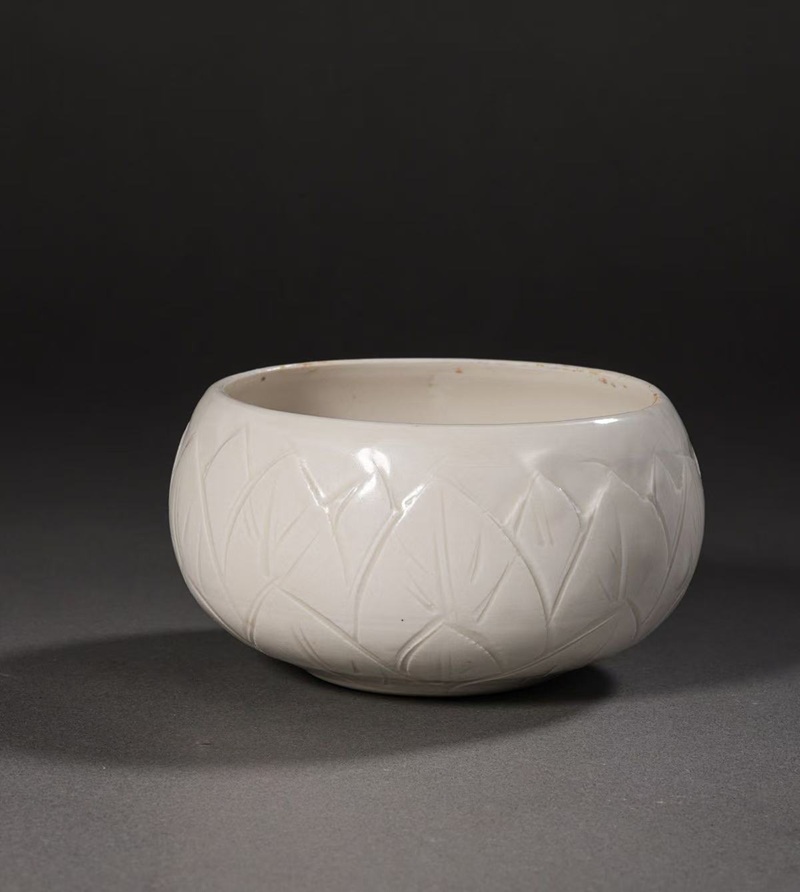Ceramic tea cups, as common beverage containers in daily life, are deeply loved by people for their unique materials and craftsmanship. Especially the styles of household ceramic tea cups with lids, such as office cups and conference cups in Jingdezhen, are not only practical but also have a certain decorative value. The following will provide you with a detailed introduction to the relevant knowledge of ceramic tea cups.
Composition and craftsmanship of ceramic tea cups
The main components of ceramic tea cups include kaolin, clay, porcelain stone, porcelain clay, coloring agents, blue and white materials, lime glaze, lime alkali glaze, etc Among them, kaolin is a high-quality raw material for porcelain making, named after its discovery in Gaoling Village, northeast of Jingdezhen, Jiangxi Province. Its chemical experimental formula is (Al2O3 · 2SiO2 · 2H2O). The production process of ceramics is relatively complex, requiring multiple processes such as clay refining, drawing, printing, polishing, sun drying, engraving, glazing, kiln firing, and color glazing For example, clay making is the process of extracting porcelain stones from mining areas, pounding them finely with a water mill, washing them, removing impurities, and settling them into brick like mud blocks. These blocks are then mixed, kneaded, or stepped on with water to extract air from the mud and ensure even distribution of moisture And the kiln is fired at a high temperature of about 1300 ℃, using pine wood as fuel, for about a day and night, guided by piling techniques, to measure the fire, grasp the temperature changes of the kiln, and determine the ceasefire time
Types of ceramic tea cups
Classified by temperature: can be divided into low-temperature ceramic cups, medium temperature ceramic cups, and high-temperature ceramic cups. The firing temperature for low-temperature ceramics is between 700-900 degrees Celsius; The firing temperature of medium temperature porcelain is generally around 1000-1200 degrees Celsius; The firing temperature of high-temperature porcelain is above 1200 degrees. High temperature porcelain has a fuller, more delicate, and crystal clear color, smooth hand feel, crisp sound, strong hardness, and a water absorption rate of less than 0.2%. It is not easy to absorb odors, crack, or leak water; However, medium and low temperature porcelain is relatively poor in color, feel, sound, texture, and has a high water absorption rate
Classified by structure: there are single-layer ceramic cups and double-layer ceramic cups. Double layered ceramic cups have better insulation effects and can maintain the temperature of drinks for a longer period of time
Classified by purpose: Common ones include mugs, thermos cups, insulated cups, coffee cups, personal office cups, etc. For example, the body of a coffee cup should be thick and the rim should not be wide or wide, in order to condense the heat of the coffee and maintain its taste and aroma; Personal office cups focus on practicality and aesthetics, often with lids for easy use during work and to prevent drinks from spilling.
Applicable scenarios of ceramic tea cups
Ceramic tea cups are suitable for various scenarios due to their material properties. At home, it is a commonly used utensil for drinking water and brewing tea, which can add an elegant touch to home life. In the office, ceramic office cups can not only meet employees’ drinking water needs, but also serve as a decoration to showcase personal taste. In the conference room, using ceramic conference cups not only appears formal but also demonstrates respect for the attendees. In addition, ceramic tea cups are also a good choice for gifting to friends and family, with certain commemorative significance and cultural connotations.
The selection method of ceramic tea cups
Check the lid: The lid should be tightly attached to the cup mouth to better maintain the temperature of the beverage and prevent dust and other impurities from falling into the cup
Listen to the sound: lightly tap the cup wall with your fingers, and if a crisp and pleasant sound is emitted, it indicates that the porcelain body is fine and dense; If the voice is hoarse, it may be inferior porcelain with poor quality
Observing patterns: Due to the possible presence of trace amounts of heavy metals such as lead and cadmium in glazed decorations, it is best not to have patterns on the outer top of the cup wall that comes into contact with the mouth when drinking water, and to avoid patterns on the inner wall as much as possible to avoid long-term use and harm to the human body.
Touch the surface: Touch the cup wall with your hand, and the surface should be smooth, without cracks, small holes, black spots, or other defects. This type of ceramic tea cup has better quality
Maintenance and Cleaning of Ceramic Teacups
Avoid collision: Ceramic tea cups have a brittle texture and are prone to breakage. When using and storing, be careful to avoid collision with hard objects.
Timely cleaning: After use, it should be cleaned promptly to avoid residual stains such as tea stains and coffee stains. When cleaning, you can rinse the cup with water, then rub dry salt or toothpaste on the cup wall, and rinse with clean water to easily remove stains
Attention to disinfection: If ceramic tea cups need to be disinfected, they can be placed in a disinfection cabinet, but it is important to choose the appropriate disinfection method to avoid high temperature damage to the tea cups.
Common questions and answers related to ceramic tea cups
Q: What should I do if there is an odor in ceramic tea set?
Answer: Newly purchased ceramic tea cups may have some unpleasant odors. You can brew them several times with boiling water, or put the tea leaves in the cup and soak them in boiling water for a period of time to eliminate the odor.
Q: Can ceramic tea cups be heated in the microwave?
Answer: Generally, ordinary ceramic tea cups can be heated in the microwave, but if there are metal decorations or gold edges on the tea cups, it is not recommended to put them in the microwave to avoid sparks and damage to the microwave.
Q: How to determine if a ceramic tea cup is toxic?
Answer: If ceramic tea cups are solid colored without glaze, they are generally non-toxic; If there is colored glaze, you can check if there is a formal testing report, or choose products that have been tested and qualified by authoritative institutions. Regular ceramic tea cups will strictly control the content of heavy metals such as lead and cadmium during the production process, in compliance with national safety standards
Q: What is the service life of ceramic tea cups?
Answer: The service life of ceramic tea cups is not fixed. As long as maintenance is taken care of during use, collision and damage are avoided, they can generally be used for a long time. But if there are cracks, damages, etc., it is not suitable to continue using it.
Q: Why are there significant price differences for some ceramic tea cups?
Answer: The price of ceramic tea cups is influenced by various factors, such as the quality of raw materials, the complexity of production processes, brand, design, etc. Generally speaking, ceramic tea cups made from high-quality kaolin, finely crafted, highly branded, and uniquely designed are relatively expensive.
Q: Can we customize logos on ceramic tea cups?
Answer: Yes, many manufacturers provide customized logo services. Specific patterns or text can be printed on ceramic tea cups according to customer needs, such as corporate logos, conference themes, etc., to increase the personalization and commemorative significance of the tea cups.
Q: What kind of tea is suitable for making in ceramic tea cups?
Answer: Most teas are suitable for brewing in ceramic tea cups, such as oolong tea, white tea, black tea, flower tea, etc. Ceramic tea cups of different materials and styles can also have a certain impact on the taste and aroma of tea, and can be chosen according to personal preferences
Q: How to remove tea stains from ceramic teacups?
Answer: In addition to cleaning with salt or toothpaste as mentioned above, tea stains can also be easily removed by soaking in white vinegar for a period of time and then rinsing with water
Q: What are the advantages of ceramic tea cups compared to glass cups?
Answer: Compared to glass cups, ceramic tea cups have better insulation performance and are less likely to get hot. In addition, the material of ceramic tea cups gives people a warm texture, which has more cultural heritage and artistic value.
Q: What should be noted when using ceramic tea cups?
Answer: When using, be careful to avoid sudden cooling and heating to prevent the tea cup from cracking due to rapid temperature changes. At the same time, do not use hard objects such as steel wool to wipe the cup wall to avoid scratching the surface.
Post time: Apr-01-2025








